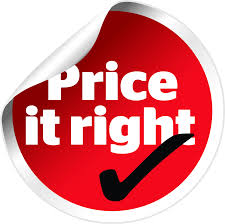5 Ways To Value Property

What are the different ways to value property?
Did you know there are a host of ways to value a piece of property? There are at least five different approaches. So, what are these methods? What distinguishes them? How do they work? Which one should you choose to value an investment property purchase, assist you to price the property you want to sell or buy? And importantly, how can you increase the value?
The Comparable Sales Approach
This is one of the more popular ways to value property. Anyone who is remotely familiar with real estate has probably heard about CMAs (comparative market analysis) and comps. The comparable sales approach uses comparable properties in determining the value. This theory is founded on the fact that identical homes should sell for the same price. If property A sells for X then property A1 should also sell for X. This determines the market value. In most cases, two the identical properties do not sell within days of the other, hence one must adjustment for any inferior or superior features in recent comparable sales have to equal them out.
There are many factors that can cause these adjustments, such as:
- Distance
- Condition of property
- Time elapsed since comparable sales
- Age of property
- Square footage
- Outstanding features like pools
- Location
- Number of bedrooms and bathrooms
- View
2. Replacement Cost
This is another of the more common ways of valuation property. It is based on how much rebuilding the property would cost today. How much money will it take to replace the property if it was blown away in a tornado or if it burned down? Will it be less expensive to rehab, build it afresh, or buy an existing property?
There is an oft-overlooked but important factor when it comes to insurance. Property owners can usually choose between insuring at the amount of the cost of replacement or the loan they are getting. Both these figures change over time though and you should make sure to adjust your insurance coverage appropriately.
3. The Income Approach
This method of property appraisal is normally used for commercial real estate and investment property. It uses the income potential, such as rental fees, of the property to determine how much it is worth. How much in rent will you be earning? Minus vacancies and expenses? Note that this compares current vacancy rates and market rents, not just the leases that you have today. It may also depend on a proven property management and income record.
4. Highest and Best Use
This is a critical factor when valuing real estate, especially when the market is rapidly changing. For example, a rundown shack 100 years old on a fair size lot may be worth extremely more than if it was redeveloped as an expansive luxury home. A property could be a target for seizure by eminent domain if it is not being put to its highest and best use. This can be either really good or really bad depending on how much you bought it for, its value now, or how much you owe on it.
5. Future Value
This is hard to value exactly because it is arguably 100% speculative. But it should not be dismissed either. It can be immensely profitable to buy at the right place and the right time. This could mean investing in property pending revitalization. Or it could be based on income, depreciation, inflation, or yield to calculate the future value. It is risky and profitable so you need to understand it to fit it in your portfolio.
Summary
There are a lot of ways to value property. And there are multiple ways to add value to real estate. Rehabbing can add space and features to improve the condition of the property and raise its value. There are multiple types of properties that can be constructed and each needs to be evaluated to determine the space’s highest and best use.